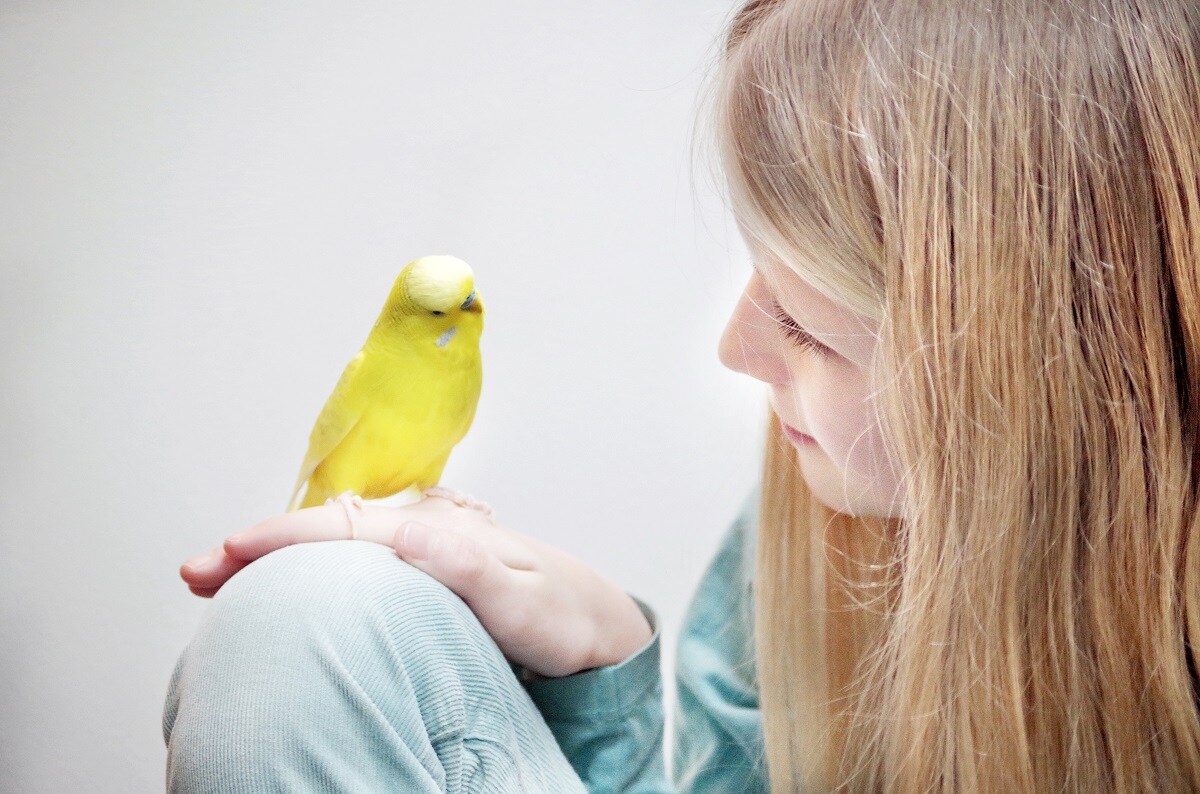Pets—in addition to bicycles and inflatable pools—are in higher demand during the COVID-19 pandemic than in any time in recent history. The reasons are obvious: You are at home more, you are displaced from routines and relationships that offer joy to you and your family, and the companionship of a new pet can add lots of excitement, as well as distraction from disheartening news cycles.
If you are considering bringing a new pet home for your child, it is important to prepare for the responsibilities and costs of the new commitment. There are many questions to ask when determining which type of pet to bring home. In this article, we are looking specifically at the option of pet birds. Is a pet bird or birds a good option for your child? And what kinds of things do you need to consider before purchasing one? We’ll tackle these questions and more to help you make your decision. Let’s dive in!
Birds as pets: pros & cons
There are many reasons a bird may be an excellent choice for your child, but it is wise to consider both the pros and cons.
The pros:
- Easier to care for than dogs or cats
- Less expensive than many other pet options (depending on the type of bird)
- Enjoy beautiful bird songs
- Teaches children responsibility
The cons:
- It is advised to have more than one
- Cage must be cleaned every 2-3 days
- Must provide large enough area for them
- Must clean the surrounding area frequently
- May cause allergies in some children
What type of bird should I get?
There are so many types of birds! Just like if you were picking any other pet, it is very important to make sure you find the one that suits your needs and preferences best. Get expert opinions based on the age of your child or children, the type of space you have available, etc. We can break it down into 3 basics just to illustrate the versatility of birds as a pet.
Cockatiels
If your child is a little older and looking for a more hands on relationship with their bird, cockatiels are a great choice. They are larger, and require a little more maintenance, which is why they are not recommended for younger children, or children who do not want a bird to bond a lot with.
Finches
Where cockatiels require more work and provide more hands-on bonding, finches are very low maintenance and can do without too much human contact. For this reason, finches make a great pet for younger children, or really anyone who wants to enjoy the pleasantry of keeping beautiful birds, but without engaging a whole lot with them.
Budgies
Sort of a happy medium, budgies or parakeets are birds that are still relatively easy to maintain—though they do require a more sophisticated diet, while offering more personality and companionship than finches.
Is my child ready for the responsibility?
Keeping a pet can be a great way for children to learn how to be responsible. However, it is important that they know exactly what it means to care for that pet before making any decisions. Research the recommended maintenance for any type of bird you are interested in, and walk through those care basics with your child before making any decisions. Explain that this will be their responsibility, with your guidance of course.
In general, children under 6 to 8 might not be ready to take on the full responsibilities of caring for birds. But this doesn’t mean that you can’t still get one. You just may have to lead the way in taking care of them until they get a little older.
Every family is different, and it is entirely up to you whether a bird is the right choice. But if your child shows real interest in bringing pet birds into the home and seem up for the responsibility, then it can be an awesome experience for the whole family.
